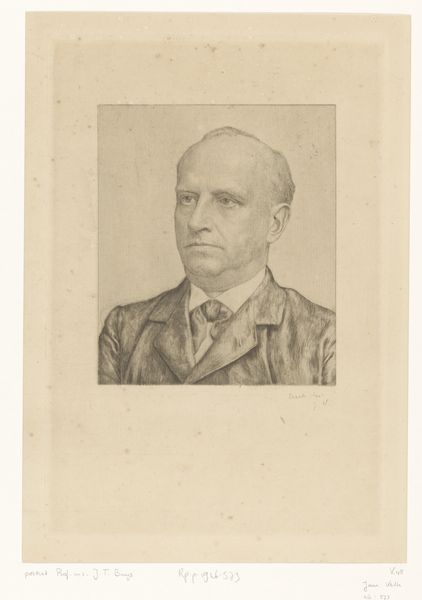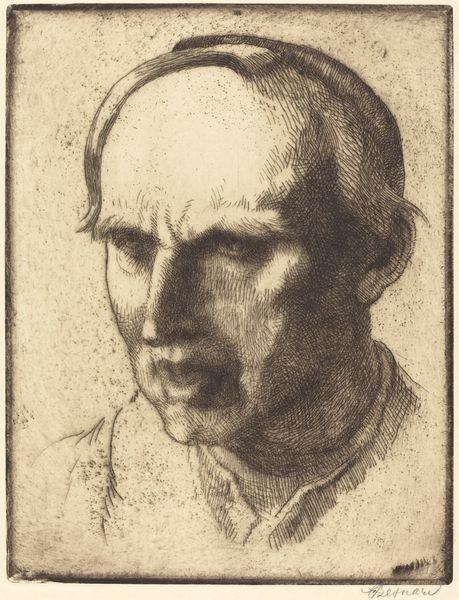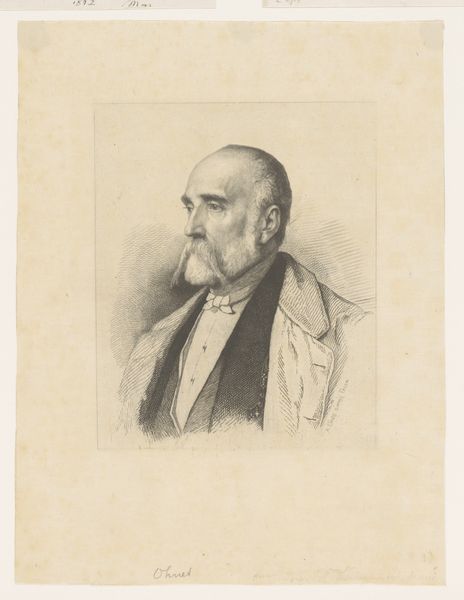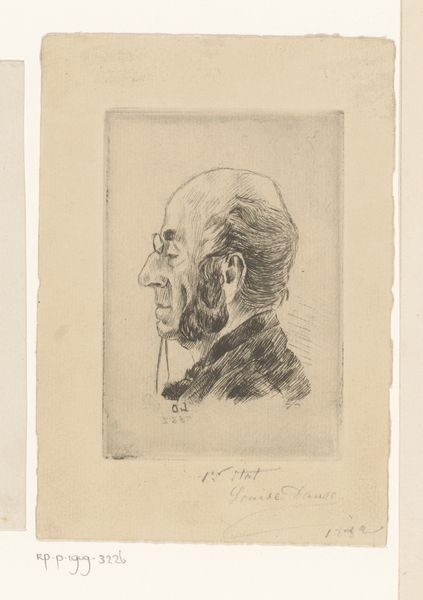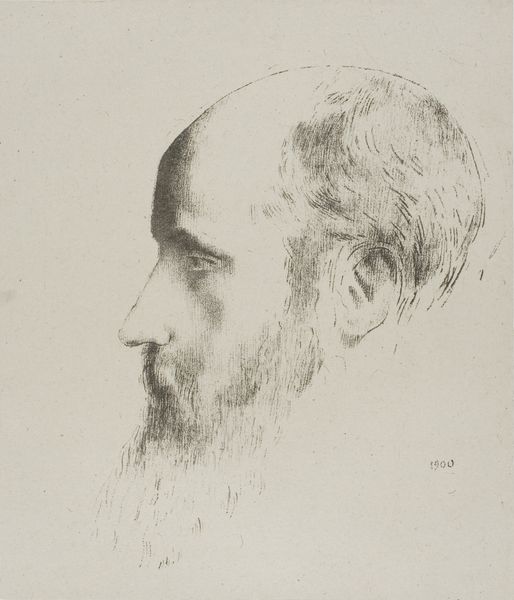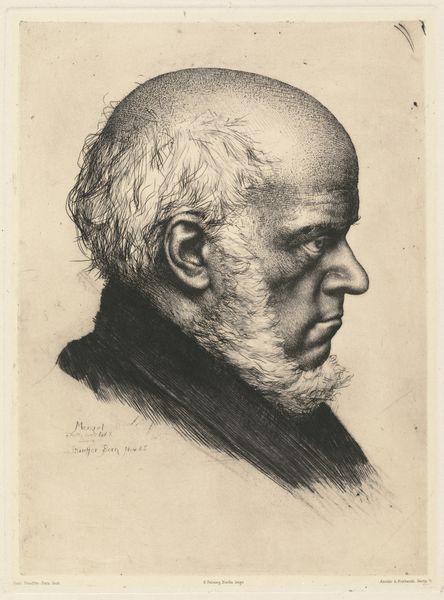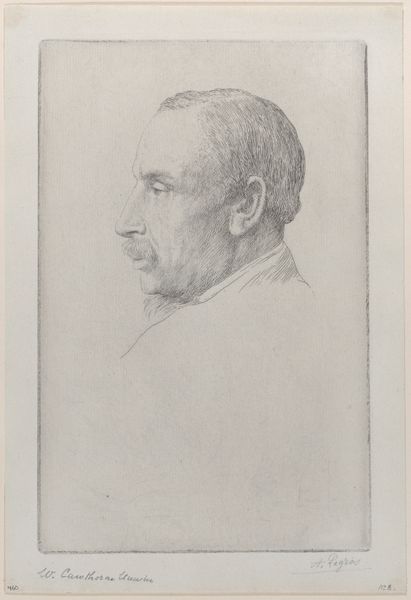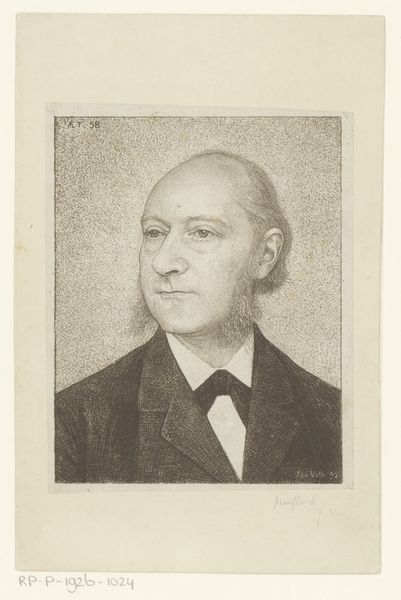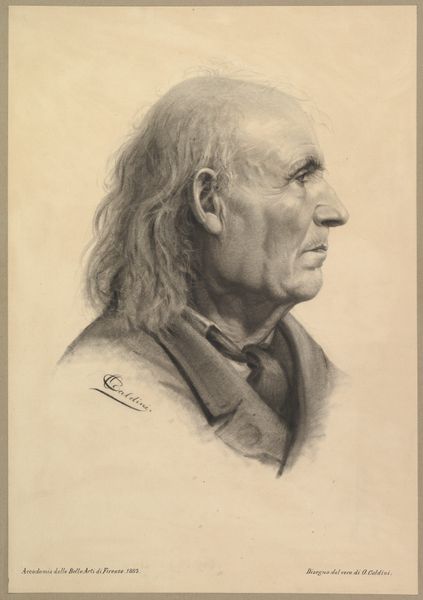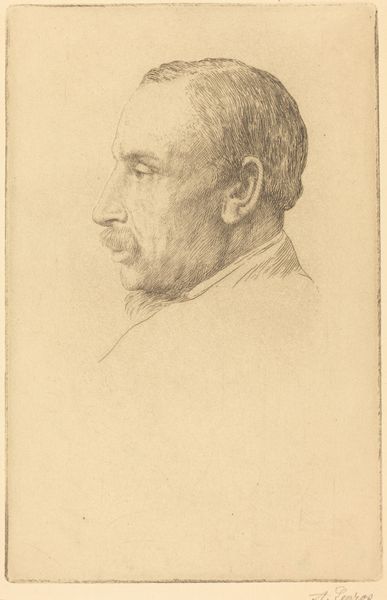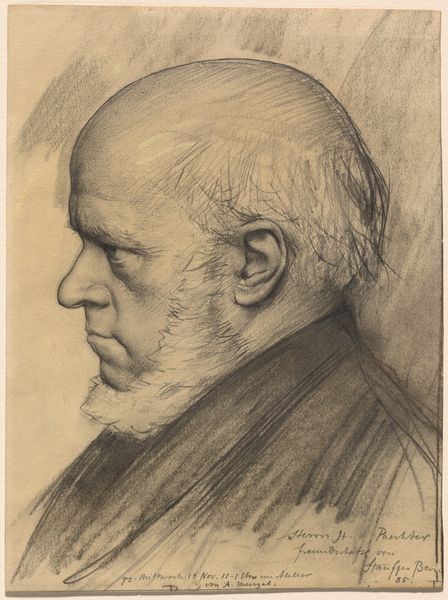
photography, gelatin-silver-print, graphite
#
portrait
#
pictorialism
#
charcoal drawing
#
photography
#
pencil drawing
#
gelatin-silver-print
#
graphite
#
portrait drawing
#
monochrome
Dimensions: 24.6 × 17.2 cm (image); 45.1 × 36.5 cm (album page)
Copyright: Public Domain
Curator: Ah, here we have Henry Herschel Hay Cameron’s gelatin-silver print, a portrait of James Spedding, dating from around 1893. I must say, it has a rather haunted quality, doesn’t it? Editor: It does. The soft focus, the monochrome palette... it gives him this spectral, almost ethereal presence. A man seemingly caught between worlds, you know? But tell me more about Spedding himself. He looks quite intellectual. Curator: He was! James Spedding was a renowned editor and biographer, best known for his work on the complete works of Francis Bacon. Thinker, writer, part of a certain intellectual elite, and someone the Camerons were orbiting, socially. Editor: So, the soft focus is part of a deliberate strategy, situating Spedding not as an individual, but as a representative of a class. Photography becomes less about documentation and more about constructing a mood, an aura. You can practically smell the stuffy Victorian libraries and intellectual sparring. Curator: Precisely! Cameron was deeply involved in pictorialism, trying to elevate photography to the level of art, playing with light and shadow, embracing the imperfections. It is not about realism, it is about suggestion. Spedding looks so pensive; what was on his mind, I wonder? Editor: I am compelled by this man. There is an undeniable psychological element at play here, don't you think? The choice of profile… almost as if Cameron wanted to capture Spedding at his most vulnerable, maybe revealing something of his intellectual weight? There’s an entire power dynamic embedded here, and to know Spedding entrusted this, speaks volumes of the relation. Curator: It certainly does, creating that sense of intimacy amidst all the soft focus. You sense a conversation—not merely between photographer and sitter, but between intellects, between eras perhaps. Editor: Yes, and between the photographer’s vision and Spedding’s lived reality. The artwork makes visible so much: of class, identity, historical context, it is like Spedding is carrying a heavy, unresolvable tension. Curator: A beautiful contradiction, isn’t it? That’s precisely why I love it, and this ability to capture what lays unspoken behind Spedding´s glance. Thank you, for opening new dimensions here. Editor: Likewise, for allowing us to reflect about its deeper significance. Thank you.
Comments
No comments
Be the first to comment and join the conversation on the ultimate creative platform.
